A Faithful Young Man on the Frontier
Not long after we left Fort Boonesborough State Park on Monday, I saw a sign for Cane Ridge Cattle Co. “Hmmm,” I wondered. “Do you suppose we are near Cane Ridge?” While Ray drove, I went back to my handy navigator and, sure enough, we were!
Cane Ridge Meeting House was the site of an historic revival in 1801. Ray and I visited the meeting house in the mid-1970s, soon after we were married and while he was in school at the University of Kentucky. Our family first wrote about Cane Ridge not long after we started Notgrass History nineteen years ago. It is a powerful American history story of faith, so we have included it in our American history curriculum sets for all three age groups. We have been wanting to visit Cane Ridge again and were grateful that God put things in place for a surprise visit there while we were following our noses through Kentucky.
Thomas Jefferson became the third president on March 4, 1801. America was a nation of sixteen states when Jefferson left his boarding house that day, and walked to the unfinished United States Capitol. By then Vermont, Kentucky, and Tennessee had joined the original thirteen colonies.
During those pioneer days on the frontier between the Appalachian Mountains and the Mississippi River, church leaders east of the mountains sent missionary preachers to the new states of Kentucky and Tennessee and to lands that were still territories. These preachers were circuit riders. (Family note: Ray’s English grandfather was a circuit riding preacher in the area around Bristol, England, a century later).
These American circuit riders traveled on horseback from one settlement to another. Families hosted the preachers in their homes. People came from all around to hear preaching in the hosts’ log cabins.
Believers also constructed log meeting houses in some places. A group of Presbyterians settled at Cane Ridge, near modern Lexington, Kentucky, in 1790 (on land that Daniel Boone suggested to them). In 1791 they built the log Cane Ridge Meeting House.
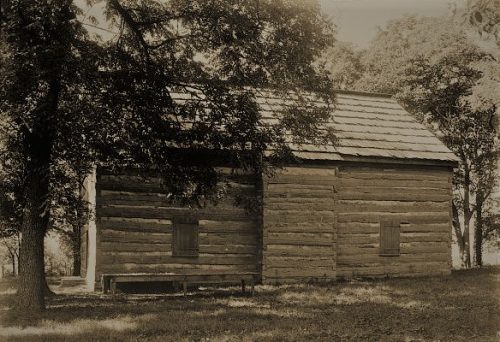
In the 1950s, Christians enclosed the Cane Ridge Meeting House in this stone building.
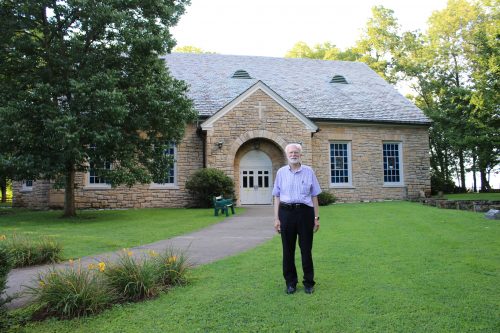
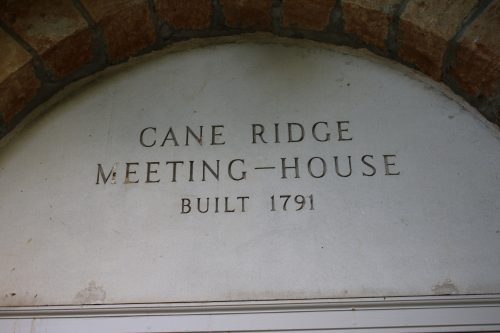

In the late 1700s, Presbyterian churches had a practice of holding a yearly communion service. These lasted from Friday to Monday. Presbyterians and members of other churches came together for these services. Local residents hosted visitors in their homes.
Around 1800, large crowds began attending these services. When the number of guests became too large for local residents to host them, they began to camp in tents and wagons. The meetings came to be called camp meetings. Preachers from various churches preached enthusiastically. Those who came worshipped and listened with enthusiasm, too.
In 1801 twenty-nine year old Barton W. Stone was serving as minister for the church that met at the Cane Ridge Meeting House and also at another nearby church. After attending a camp meeting earlier that year, Stone decided to host one at Cane Ridge during the first weekend in August.
Between 20,000 and 30,000 people gathered for the camp meeting at Cane Ridge. They were rich and poor, young and old, black and white. Preachers preached from wooden pulpits in various places around the meeting house. People listened to them night and day. Worshippers worshiped so loudly that people could hear them shouting from miles away. This camp meeting went on for days. Many became followers of Jesus.
Ray and I were thrilled to walk around the grounds around the meeting house and think about what happened there.
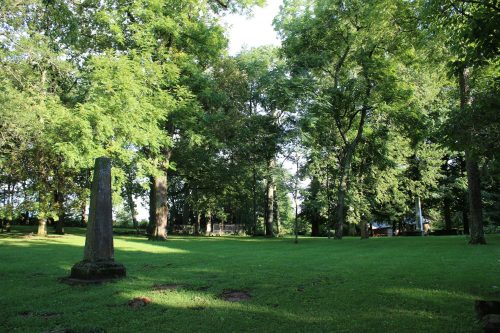
As I typed that just now, I realized that we were actually there on August 6, the date when the Cane Ridge Camp Meeting began 117 years ago!
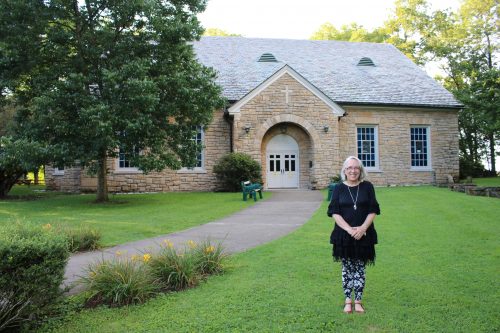
Barton W. Stone continued to work as a minister and evangelist for the rest of his life. He preached his last sermon two weeks before his death at age 71 in 1844. He spent his life encouraging people to love God and to follow His word. He also worked to bring unity among all who believe in Jesus.
Christians have erected this obelisk above his grave in the cemetery beside the meeting house.

They have also erected this memorial.

It was not until we were there this past Monday that Ray and I realized how young Barton W. Stone was when he hosted the Cane Ridge Camp Meeting. That realization makes me think about Paul’s instruction to Timothy.
Let no one look down on your youthfulness,
but rather in speech, conduct, love, faith and purity,
show yourself an example of those who believe.
1 Timothy 4:12
Stone followed Jesus as a young man and continued to follow Him throughout His life. As we prepare our children for their lives as adults, we must give them tools to be faithful to Jesus as children and young adults. We must also give them tools to be faithful to Jesus for a lifetime, tools to use after they have experienced difficult things that tempt them to leave their first love. Knowledge of God’s Word is a primary tool we can give them.
How can a young man keep his way pure?
By keeping it according to Your word.
With all my heart I have sought You;
Do not let me wander from Your commandments.
Your word I have treasured in my heart,
That I may not sin against You.
Blessed are You, O Lord;
Teach me Your statutes.
With my lips I have told of
All the ordinances of Your mouth.
I have rejoiced in the way of Your testimonies,
As much as in all riches.
I will meditate on Your precepts
And regard Your ways.
I shall delight in Your statutes;
I shall not forget Your word.
Psalm 119:9-16
My thanks to our daughter Bethany Poore who wrote the lesson “Circuit Riders and Camp Meetings” in our new Our Star-Spangled Story curriculum. Several facts from this post came from that lesson.

